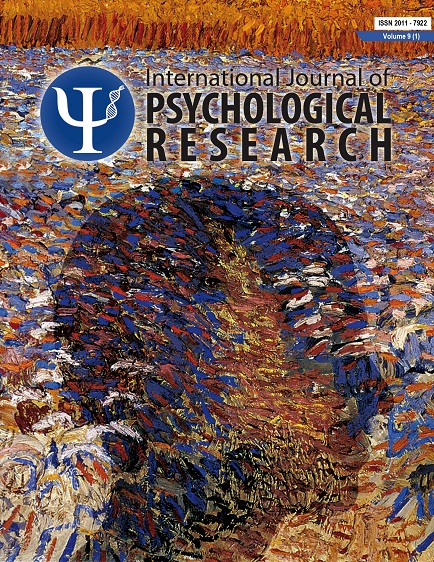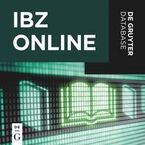Publication Facts
Reviewer profiles N/A
Author statements
- Academic society
- University of San Buenaventura - Cali
- Publisher
- Universidad San Buenaventura - USB (Colombia)
Abstract
Introduction: Although impairment in decision-making is a frequent consequence of frontal lobe injury, few instruments evaluate decision-making in patients with acquired brain injury (ABI). Most are difficult to use and require a well-preserved ability of complex verbal comprehension and executive functions. We propose the Balloon Analogue Risk Task (BART) as an alternative instrument to evaluate decision-making in ABI. Material and Methods: Balloon Analogue Risk Task (BART) and Iowa Gambling Task (IGT) were administered to a clinical group of 30 patients with ABI and to a control group of 30 healthy participants; comparative study to assess possible differences in the results obtained; analysis to determine a possible correlation between the two tests between groups. Results: The results showed that BART is a sensitive instrument to detect differences in performance between a control group and a group of patients with ABI, p < .001, 95 % CI =537.21-1575.46, but do not correlate with IGT, p = .524, rab.c = ‒.134. Conclusions: Although IGT and BART were both designed to assess decision-making, the results obtained in our study show that the scores obtained by patients with ABI on both tests do not correlate. This clearly proves that IGT and BART measure different aspects of decision-making.
References
Alameda, J.R., Paíno, S. y Mogedas, A.I. (2012). Toma de decisiones en consumidores de cannabis. Adicciones, 24(2), 161-172.
Alberdi, F., Iriarte, M., Mendía, A., Murgialda, A. & Marco, P. (2009). Prognosis of the sequels after brain injury. Medicina Intensiva, 33, 171-81. doi:10.1016/S0210-5691(09)71213-6.
Benjamin, A. M., & Robbins, S. J. (2007). The role of framing effects in performance on the Balloon Analogue Risk Task (BART). Personality and Individual Differences, 43, 221– 230. doi:10.1016/j.paid.2006.11.026.
Bonatti, E., Zamarian, L., Wagner , M., Benke, T., Hollosi, P. & Strubreither, W. (2008). Making decisions and advising decisions in traumatic brain injury. Cogn Behav Neurol., 21, 164-175. doi doi: 10.1097/WNN.0b013e318184e688.
Buelow, M.T. & Blaine, A.L. (2015). The assessment of risky decision making: A factor analysis of performance on the Iowa gambling task, balloon analogue risk task, and Columbia card task. Psychol Asess, 27(3), 777-85. doi: 10.1037/a0038622.
Bechara, A., Damasio, A. R., Damasio, H. & Anderson, S. W. (1994). Insensitivity to future consequences following damage to human prefrontal cortex. Cognition, 50, 7-15. doi:10.10163/0010-0277(64)90018-3.
Bechara, A. (2007). Iowa Gambling Task: Professional Manual. Psychological Assessment Resourses, Inc.
Biringer, E., Lundervold, A., Stordal, K., Mykletun, A., Egeland, J., Bottlender, R., & Lund, A. (2005). Executive function improvement upon remission of recurrent unipolar depression. European Archives of Psychiatry and Clinical Neuroscience, 255, 373-380. doi:10.1007/s00406-0052-0577-7.
Broche-Pérez Y., Cortés-González, L. & Omar-Martínez, E. (2015). Toma de decisiones en jóvenes con conductas antisociales: Evidencias desde el Iowa Gambling Task. Neurología Argentina doi:10.1016/j.neuarg.2015.03.006.
Cardoso, C.O., Branco, L.D., Cotrena, C., Kristensen, C.H., SchneiderBakos, D.D.G. & Fonseca, R.P. (2014). The impact of frontal and cerebellar lesions on decision making: evidence from the Iowa Gambling Task. Front Neurosci, 8 doi: 10.1590/S0047-20852010000400003.
Collette, F., Hogge, M., Salmon, E., & Van der Linden, M. (2006). Exploration of the neural substrates of executive functioning by functional neuroimaging. Neuroscience, 139, 209- 221. doi:10.1016/j.neuroscience.2005.05.035.
Damasio, A. (1996). The somatic marker hypothesis and the possible functions of the prefrontal cortex. Philosophical Transactions of the Royal Society of London B, 351, 1413-1420. doi:10.1098/rstb.1996.0125.
Davidson, P. S., Gao, F .Q., Mason, W. P., Winocur, G., & Anderson, N. D. (2007). Verbal fluency, Trail Making and Wisconsin Card Sorting Test performance following right frontal lobe tumor resection. Journal of Clinical and Experimental Neuropsychology, 11, 1-15. doi:10.1080/13803390601161166.
Disability National Observatory (2011, January 20). New Data on the Incidence of DCA. Retrieved from: http://www.fedace.org/portal/index.php/noticias-de-actualidad/136-datosdca.html.
Fecteau, S., Pascual-Leone, A., Zald, D. H., Liguori, P., Théoret, H., Boggio, P. S., & Fregni, F. (2007). Activation of prefrontal cortex by transcranial direct current stimulation reduces appetite for risk during ambiguous decision making. The Journal of Neuroscience, 27(23), 6212–8. doi:10.1523/JNEUROSCI.0314-07.2007
Fisk, J. E., & Sharp, C. A. (2004) Age related impairment in executive functioning: Updating, inhibition, shifting and access. Journal of Clinical and Experimental Neuropsychology, 26, 874-890. doi:10.1080/13803390490510680.
García Molina, A., Roig Rovira, T., Yuguero Rueda, M., Enseñat Cantallops, A. Bernabeu, M., Sánchez-Carrión, R (2008). Community integration as an outcome of traumatic brain injury neurorehabilitation. Rehabilitación, 42, 67-72. doi:10.1016/S0048-7120(08)73616-8.
Killgore, W. D. S. (2007). Effects of sleep deprivation and morningness-eveningness traits on risk-taking. Psychological Reports, 100, 613–626. doi:10.2466/PR0.100.2.613-626
Lejuez, C. W., Read, J. P., Kahler, C. W., Richards, J. B., Ramsey, S. E., Stuart, G. L., Strong, D. R., & Brown, R. A. (2002). Evaluation of a behavioral measure of risk taking: the Balloon Analogue Risk Task (BART). Journal of Experimental Psychology: Applied, 8, 75-84. doi:10.1037//1076-898X.8.2.75.
Lejuez, W. C., Akalín, M. W., Zvolensky, J. M., & Pedulla, M. C. (2003). Evaluation of the Balloon Analogue Risk Task (BART) as a predictor of adolescent real-world risk-taking behaviors. Journal of Adolescence, 26, 475-479. doi:10.1016/S0140-1971(03)00036-8.
Lejuez, C. W., Aklin, W. M., Jones, H. A., Richards, J. B., Strong, D. R., Kahler, C. W. et al. (2003). The balloon analogue risk task (BART) differentiates smokers and nonsmokers. Experimental and Clinical Psychopharmacology, 11(1), 26-33. doi:10.1037/1064-1297.11.1.26.
Lejuez, C. W., Aklin, W. M., Daughters, S. B., Zvolensky, M. J., Kahler, C. W., & Gwadz, M. (2007). Reliability and validity of the youth version of the Balloon Analogue Risk Task (BART-Y) in the assessment of risk-taking behavior among inner-city adolescents. Journal of Clinical Child and Adolescent Psychology, 36, 106–111.doi: 10.1080/15374410709336573.
Lighthall NR, Sakaki M, Vasunilashorn S, Somayajula S, Chen E, Mather M. (2009). Sex differences in stress effects on brain activation and behavior during risk taking. Cognitive Neuroscience Society Annual Meeting. San Francisco, CA
Livingstone, S. A., & Skelton, R. W. (2007). Virtual environment navigation tasks and the assessment of cognitive deficits in individuals with brain injury. Behavioural Brain Research, 185, 21-31. doi:10.1016/j.bbr.2007.07.015.
Madrazo, L. M., Machuca, M. F., Barrosso, J. M., Domínguez, M. D. & León-Carrión, J. (1999). Emotional changes after severe traumatic brain injury. Revista Española de Neurología, 1, 75-82.
Martínez-Selva, J. M., Sánchez-Navarro, J. P., Bechara, A., & Román, F. (2006). Brain mechanisms involved in decision making. Revista de Neurología, 42, 411-418.
MacPherson, L., Magidson, J. F., Reynolds, E. K., Kahler, C. W., & Lejuez, C. W. (2010). Changes in sensation seeking and risktaking propensity predict increases in alcohol use among early adolescents. Alcoholism, Clinical and Experimental Research, 34, 1400–08. doi: 10.1007/s11121-010-0172-7.
Miura, H. (2009). Differences in frontal lobe function between violent and nonviolent conduct disorder in male adolescents. Psychiatry and Clinical Neurosciences, 63, 161–166
Mogedas, A.I. & Alameda, J.R. (2011). Toma de decisiones en pacientes drogodependientes. Adicciones, 23, 277-287
Rochat, L., Beni, C., Billieux, J., Azouvi, P., Annoni, J. M. & Van der Linden, M. (2010). Assessment of impulsivity after moderate to severe traumatic brain injury. Neuropsychological Rehabilitation, 20(5), 778-797. doi:10.1080/09602011.2010.495245.
Sigurdardottir, S., Andelic, N., Roe, C. & Schanke, A. K. (2009). Cognitive recovery and predictors of functional outcome 1 year after traumatic brain injury. Journal of the International Neuropsychological Society, 15, 740-750. doi:10.1017/S1355617709990452.
Sigurdardottir, S., Andelic, N., Roe, C. & Schanke, A. K. (2010). Cognitive recovery and predictors of functional outcome 1 year after traumatic brain injury. Journal of the International Neuropsychological Society, 15, 740-750. doi:10.1017/S1355617709990452.
Strenziok, M., Pulaski, S., Krueger, F., Zamboni, G., Clawson, D., & Grafman, J. (2011) Regional Brain Atrophy and Impaired Decision Making on the Balloon Analog Risk Task in Behavioral Variant Frontotemporal Dementia. Cognitive and Behavioral Neurology, 24(2), 59-67. doi:10.1097/WNN.0b013e3182255a7c.
Strauss, E., Sherman, E., & Spreen, O. (2006). A compendium of neuropsychological tests: Administration, norms, and commentary (3rd ed.) (pp. 32-37). NY: Oxford University Press.
Van Noordt, S. & Good, D. (2011). Mild head injury and sympathetic arousal: Investigating relationships with decision-making and neuropsychological performance in university students. Brain Injury, 25(7-8), 707-716. doi:10.3109/02699052.2011.580312.
Young, S., Gudjonsson, G., Carter, P., Terry, R., & Morris, R. (2012). Simulation of risk- taking and it relationship with personality. Personality and Individual Differences, 53, 294-299. doi:10.1016/j.paid.2012.03.014


































